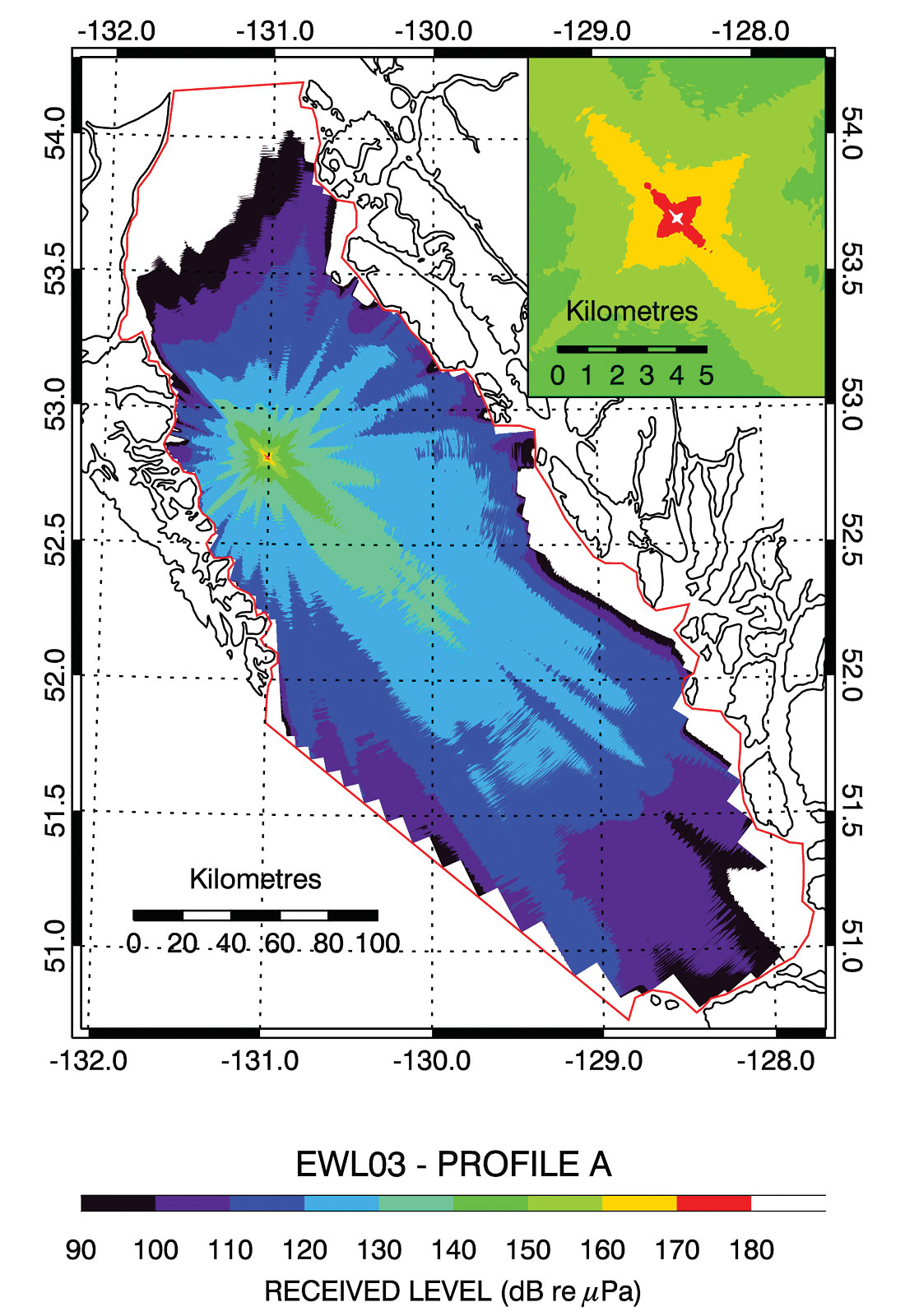In recent years there has been renewed interest in offshore oil and gas exploration and development in British Columbia. Particular attention has focused on the Queen Charlotte Basin (QCB) where the largest hydrocarbon deposits are believed to be located. Potential oil and gas exploration in this area will expose marine mammals and fish to heightened levels of underwater noise from seismic airgun activity. Very little is currently known about the effects of seismic airgun noise on marine mammals and fish, including at what noise levels these effects are “biologically significant” (see, e.g., NRC, 2004), but it is believed potential effects can be both physiological and behavioural. Among the most basic questions that require answers are: “How loud is an airgun array?” and “What sound levels are generated by an airgun survey at location X?”

A recent University of Victoria thesis project (co-sponsored by the B.C. Offshore Oil and Gas Team and JASCO Research Ltd) has presented a general method for predicting airgun survey sound levels in the marine environment and has applied this method to the QCB (MacGillivray and Chapman 2005, MacGillivray, 2006). The method developed in this thesis has used (1) an airgun array source model and (2) a parabolic-equation based acoustic propagation model to estimate sound levels generated in the vicinity of a marine seismic survey. The airgun array source model, which was developed as part of the thesis project, is a full-waveform source signature model, based on a physical simulation of air injection into the water, and the subsequent oscillations and acoustic radiation of the generated air bubbles. The acoustic propagation model, RAM (which was developed at the US Naval Research Laboratory) is a parabolic-equation based model that predicts sound transmission through a range-varying, inhomogeneous water column over an elastic seabed (Collins, 1991). RAM was modified to include shear wave losses in bottom sediments using a complex bottom density approach (Zhang and Tindle, 1995). The airgun array and sound propagation models used several databases describing the acoustic environment in QCB (including seabed bathymetry, seasonal sound speed profiles in the water and geoacoustic profiles of the sub-bottom) to calculate sound fields generated by an airgun survey (see Figure 1). Underwater sound levels for a 3000 cubic inches airgun array were modelled at 9 different locations in QCB, over regions of the basin with high potential for oil and gas deposits. Key findings from this thesis project included the following:
- Received underwater noise levels from the airgun array were dependent on the location of the survey vessel within the basin; water depth, geoacoustic environment and water sound speed profile strongly influenced the distances to given noise levels.
- Short range sound levels (<1 km) were most strongly influenced by the water depth at the airgun array location; sound levels were over 6 decibels greater in shallow water than in deep water.
- At long range the seasonal sound speed profile had a strong influence on received levels. Winter sound levels were observed to be 20 dB greater than summer levels at distances beyond 100 km from the array.
- Sound levels varied significantly with azimuthal direction from the airgun array, with highest sound levels observed in the broadside direction from the array.
The method developed in this thesis project can be applied to an arbitrary airgun survey at any location for which the appropriate environmental data are available and will thus facilitate future seismic survey noise level predictions for the BC offshore and elsewhere.











Join the Conversation
Interested in starting, or contributing to a conversation about an article or issue of the RECORDER? Join our CSEG LinkedIn Group.
Share This Article